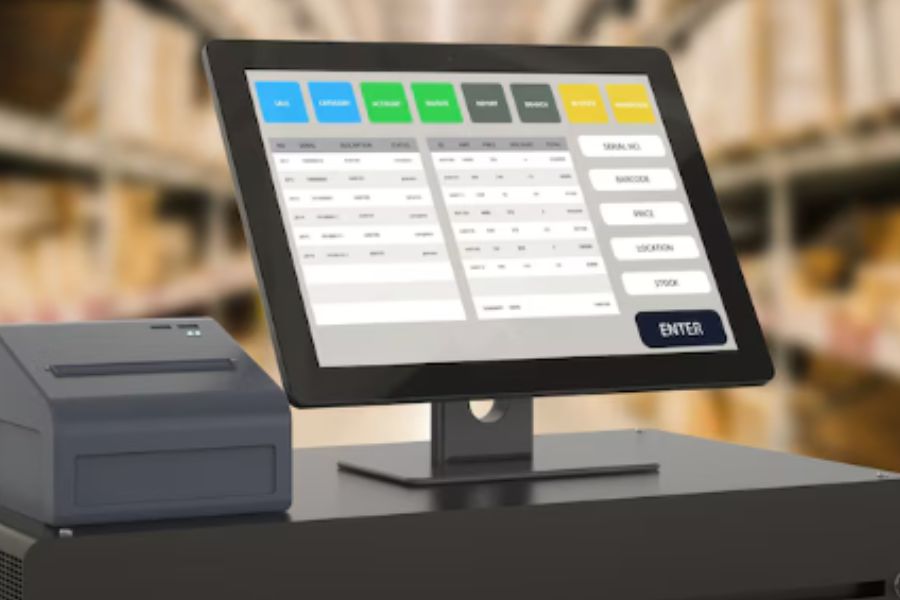It’s a whole new year already! It’s high time brands and businesses upgraded their operations and came up with new strategies to thrive in 2023. One of the most fundamental elements to keep in mind while strategically planning for a successful business operation is distribution. Distribution is the core of every business as it ensures a stable and steady supply flow. In today’s article, we’ll present you with the best retail distribution strategies to embrace in 2023.
What is a retail distribution strategy?
A distribution strategy is a method of distributing goods or services from manufacturers to end-users. It involves a number of different parties based on the type of retail distribution and other business elements like business sizes and types. The parties include manufacturers, wholesalers, retailers, agents, etc. Choosing the right retail distribution strategy is the key to an efficient distribution process, increased revenue, and sustainable customer loyalty.
Deciding on a distribution strategy at its core embraces a marketing channel choice and processes coordination. A company must determine who would be its intermediary, and under what conditions he/she is going to deal with the products. It is built up around 3 main factors: customer services, inventory management, and transportation.
A point of sale (POS) system is crucial for all retailers, regardless of their sizes. It helps to support the effectiveness of the retail distribution strategy. ConnectPOS is an accomplished company that provides POS solutions to businesses. It offers a range of features that can help businesses improve their retail operations. For example, the system can provide real-time data on sales and inventory levels, which can help businesses make informed decisions about pricing and promotions. ConnectPOS also offers features like customer management and loyalty programs. These should help businesses build stronger relationships with their customers.
There are 3 retail distribution strategies to pay attention to in 2023: intensive, selective, and exclusive distribution.
Best retail distribution strategies
Intensive distribution strategy
Definition
Intensive distribution is a distribution strategy that companies utilize to spread the availability of products widely to penetrate as much of the market as they can. This goal is achieved by brands putting their products into as many retail locations as possible. Intensive retail distribution is particularly common among retailers selling convenience products. For example, you can easily find a pack of instant noodles practically almost everywhere you go. It appears in many places such as a supermarket, gas stations, vending machines, drug stores, convenience stores, you name it. After all, it’s more likely for a pack of instant noodles to become recognizable when it’s been placed in multiple locations.
Intensive distribution advantages
Boost product awareness. This is perhaps the most vital advantage of intensive distribution. Besides, it’s also the main reason why so many manufacturers adopt this retail distribution for their products. With this strategy, customers also begin associating print ads and digital ads with the products they regularly see in stores. As a result, product awareness increases.
Encourage impulse buying. Despite controversies among experts about the effectiveness of impulse buying, companies still can benefit from it under certain circumstances. For instance, for retailers that are selling convenience products that customers are likely to grab whichever they see on the shelf, it’s fruitful for them to make their products appear in as many locations as possible. Additionally, when shopping for such a product type, buyers also tend to select the most recognizable product if their normally-go-to brands aren’t available. This can increase the chances of unexpected sales which wouldn’t have been possible if the product wasn’t widely available.
Enhance revenue. When you think about it, it’s pretty straightforward: The more ground you cover, the more sources you’ll be able to generate revenue from, the more profits you’ll gain. Additionally, to increase product visibility even more, manufacturers can invest in better product locations. As a result, they can increase the chances of sales.
It’s worth mentioning that a POS system can offer features for omnichannel sales, vendor management, employee management, and customer loyalty. It helps improve the efficiency and profitability of a business by streamlining the transaction process and providing valuable insights into sales data. And one of the best POS solutions for businesses that want to implement an intensive distribution strategy and an omnichannel approach is ConnectPOS. ConnectPOS is cloud-based POS software that integrates seamlessly with various e-commerce platforms, such as Shopify, Magento, and WooCommerce. It enables you to sell in person, online, on social media, and on marketplaces with a unified back office. ConnectPOS also supports multiple payment methods, inventory synchronization, real-time reporting, and customer management.
If you are interested in trying this system for your business, we recommend you sign up for a free 14-day trial and receive a free consultation from its support team. ConnectPOS is easy to set up and use, and it offers affordable pricing plans for different business needs. It is indeed the ideal solution for businesses that want to grow their sales and reach more customers with an omnichannel POS system.
Selective distribution strategy
Definition
Selective distribution is a middle-ground retail distribution between intensive and exclusive distribution. Products are disseminated to multiple locations with this retail distribution, but not as many as with the intensive distribution strategy. For example, a high-end clothing brand like Tommy Hilfiger may choose to distribute its items to its own branded stores. In addition to that, buyers can also find its products in a few selected department stores. However, places like Walmart or Target can’t be seen selling Tommy Hilfiger’s items. The reason is that brands like Tommy Hilfiger, Gucci, or Balenciaga need to implicit and maintain high-end brand messages.
Selective distribution advantages
Ensure good market coverage. Even though the aim of selective retail distribution isn’t to cover as many retail locations as possible, it allows companies to have good market coverage. Additionally, this distribution strategy is more cost-effective than intensive distribution is since there are fewer outlets to look after. With that being said, both new and existing firms can experiment with this alternative to optimize their market coverage.
Have more control. Since there are only a few outlets to manage, manufacturers are able to have more control over and establish good working relationships with channel members. Additionally, manufacturers also have better control in terms of how the product is handled by distributors. Better communication and coordination ultimately result in an improved brand image which is what almost all companies are desiring.
Boost customer satisfaction. Since the companies handpick the number of distributors, it’s more likely that customers can have better quality services and products. Besides, manufacturers having more control over their retail channels leads to a decrease in fumbles. As a result, they can boost their consumer satisfaction as well.
Exclusive distribution strategy
Definition
The exclusive distribution strategy is the contrast to the intensive one. This retail distribution holds particular distributors obliged to sell products exclusively in certain defined places. Exclusive distribution is normally practiced in businesses dealing with luxurious and high-end products. Therefore, there’s a correlation between this retail distribution strategy and the brand’s prestige image. It targets a niche segment that is well-defined and able to purchase the product, even if it is hard to reach. For example, let’s think about how many BMW outlets where you live. 1? 2? Or maybe you might have to travel to another city to purchase a BMW. That’s the exclusivity right there.
Exclusive distribution advantages
Keep the firm focused. Once having many distribution channels to manage is off from the company’s focus, it can effectively concentrate on other means of increasing publicity and sales. Moreover, the fewer outlets to watch out for, the more effectively the company can take care of its retail distribution.
Secure the manufacturer’s finances. The ability to stock a large number of products is an attractive trait of exclusive distributors. With that being said, the product is readily available to wholesalers and retailers, which increases distribution. Furthermore, it’s normal for exclusive distributors to have substantial amounts of money to pay for the products. Thus, the manufacturer’s cash situation is enhanced by the payments made by the distributors to stock the product. As a result, the manufacturers are risk-free from financial problems thanks to the distributors. However, bear in mind that all this is true only when the distributor is ethical, trustworthy, and financially stable.
Facilitate localization. If a company is entering a foreign country, there are many things that the company won’t know. Moreover, it could take a really long time for companies to catch up with all of those things. That’s why at such a time, entering an exclusivity agreement with a local distributor who is trustworthy is a marvelous option. The reason is that the local distributor will have a solid knowledge of the market and some handy relations with existing retailers and wholesalers. As a result, brands can start strong in a new market.
What to consider when choosing your distribution strategy
Item type
At its core, there are 3 types of purchase decisions: routine, limited, and extensive.
A routine purchase is products that normally have low prices and customers usually don’t spend much time considering while making purchasing decisions. Those products are deemed highly replaceable as when the product is out-of-stock from certain brands, people tend to switch to another instead of going to other stores for a particular brand. Examples are hand soap, paper towels, etc. With these items, an extensive distribution strategy is suggested. Because customers aren’t necessarily devoted to specific brands, making the products everywhere and easily accessible increases sales chances.
Limited purchase decisions are somewhere in between routine and extensive purchases. These items are generally moderately priced. Consumers spend more time considering and comparing different brands than they do with a routine purchase. Some examples of limited-purchase products are clothing and kitchen appliances like blenders or toasters. Customers put more effort into the purchase of these items in terms of price and usability. And either a selective or intensive distribution strategy is suitable for this type of product.
Finally, extensive purchase includes high-risk items such as houses, insurance, cars, and education. Because the cost of an item goes up, the intensity of the purchase decision increases as well. An exclusive distribution strategy works well for these items as it supports customers’ belief that the product or service is worth its price. Some brands even produce fewer of these costly products to increase the price of each item.
Costs and losses
As mentioned above, each retail distribution strategy has its own advantages coming along with its requirements and costs. In order to choose the right distribution strategy for your retail businesses, it is important to be aware of the costs to ensure that your business finance can fulfill the expenses and back up the losses if they ever happen.
In detail, the extensive retail distribution strategy means making products appear in as many markets and retail locations as possible. So this is fairly obvious: increasing product awareness is expensive, especially if a company wants its products in every store. The prices may vary depending on the retailer’s location. Thus, it is important to consider if you’re planning to adopt an intensive distribution strategy for your retail business.
Even though selective retail distribution is deemed to be not as expensive as the intensive option does, disputes with distributors can lead to hefty losses. With that being so, this might be an expensive method of distribution. When disagreements occur, companies must ensure a good amount of proper communication to resolve all conflicts immediately.
Like selective retail distribution, disputes in exclusive distribution can cause huge losses. Regularly, a disagreement with one distributor means that the single distributor won’t perform but the distribution will still go on through other distributors. However, a dispute with your exclusive distributor can cause you to lose the whole market. This exclusive distributor might have strong and long-lasting relations in the local market, making it hard for another distributor to create the same relations. Thus, in exclusive retail distribution, if a company experiences a major dispute with its exclusive distributor, it might undergo huge losses, not only in terms of money but also in terms of time lost.
In a nutshell
To conclude, the 3 major retail distribution strategies to pay close attention to in 2023 include intensive distribution, selective distribution, and exclusive distribution. Intensive distribution aims to reach as many customers as possible by placing the product in many outlets. Selective distribution focuses on limited outlets that match the product’s image and target market. Exclusive distribution grants exclusive rights to a single distributor or retailer to sell the product in a specific area.
Each of these strategies has its own benefits and drawbacks, depending on the type of product, the level of competition, and the customer preferences. Thus, learning about them and choosing the one that suits your business goals best is essential. We hope that this article has provided you with some useful insights and guidance on how to select the right retail distribution strategy for your business. If you have any questions or need more information, please feel free to contact us anytime.



